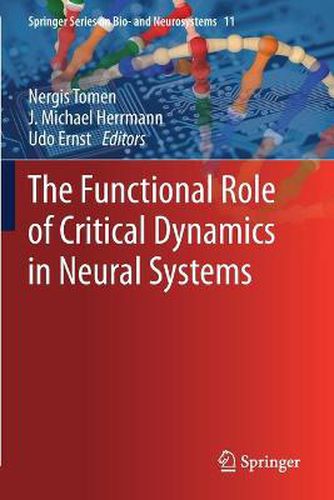Readings Newsletter
Become a Readings Member to make your shopping experience even easier.
Sign in or sign up for free!
You’re not far away from qualifying for FREE standard shipping within Australia
You’ve qualified for FREE standard shipping within Australia
The cart is loading…






This title is printed to order. This book may have been self-published. If so, we cannot guarantee the quality of the content. In the main most books will have gone through the editing process however some may not. We therefore suggest that you be aware of this before ordering this book. If in doubt check either the author or publisher’s details as we are unable to accept any returns unless they are faulty. Please contact us if you have any questions.
This book offers a timely overview of theories and methods developed by an authoritative group of researchers to understand the link between criticality and brain functioning. Cortical information processing in particular and brain function in general rely heavily on the collective dynamics of neurons and networks distributed over many brain areas. A key concept for characterizing and understanding brain dynamics is the idea that networks operate near a critical state, which offers several potential benefits for computation and information processing. However, there is still a large gap between research on criticality and understanding brain function. For example, cortical networks are not homogeneous but highly structured, they are not in a state of spontaneous activation but strongly driven by changing external stimuli, and they process information with respect to behavioral goals. So far the questions relating to how critical dynamics may support computation in this complex setting, and whether they can outperform other information processing schemes remain open. Based on the workshop Dynamical Network States, Criticality and Cortical Function , held in March 2017 at the Hanse Institute for Advanced Studies (HWK) in Delmenhorst, Germany, the book provides readers with extensive information on these topics, as well as tools and ideas to answer the above-mentioned questions. It is meant for physicists, computational and systems neuroscientists, and biologists.
$9.00 standard shipping within Australia
FREE standard shipping within Australia for orders over $100.00
Express & International shipping calculated at checkout
This title is printed to order. This book may have been self-published. If so, we cannot guarantee the quality of the content. In the main most books will have gone through the editing process however some may not. We therefore suggest that you be aware of this before ordering this book. If in doubt check either the author or publisher’s details as we are unable to accept any returns unless they are faulty. Please contact us if you have any questions.
This book offers a timely overview of theories and methods developed by an authoritative group of researchers to understand the link between criticality and brain functioning. Cortical information processing in particular and brain function in general rely heavily on the collective dynamics of neurons and networks distributed over many brain areas. A key concept for characterizing and understanding brain dynamics is the idea that networks operate near a critical state, which offers several potential benefits for computation and information processing. However, there is still a large gap between research on criticality and understanding brain function. For example, cortical networks are not homogeneous but highly structured, they are not in a state of spontaneous activation but strongly driven by changing external stimuli, and they process information with respect to behavioral goals. So far the questions relating to how critical dynamics may support computation in this complex setting, and whether they can outperform other information processing schemes remain open. Based on the workshop Dynamical Network States, Criticality and Cortical Function , held in March 2017 at the Hanse Institute for Advanced Studies (HWK) in Delmenhorst, Germany, the book provides readers with extensive information on these topics, as well as tools and ideas to answer the above-mentioned questions. It is meant for physicists, computational and systems neuroscientists, and biologists.